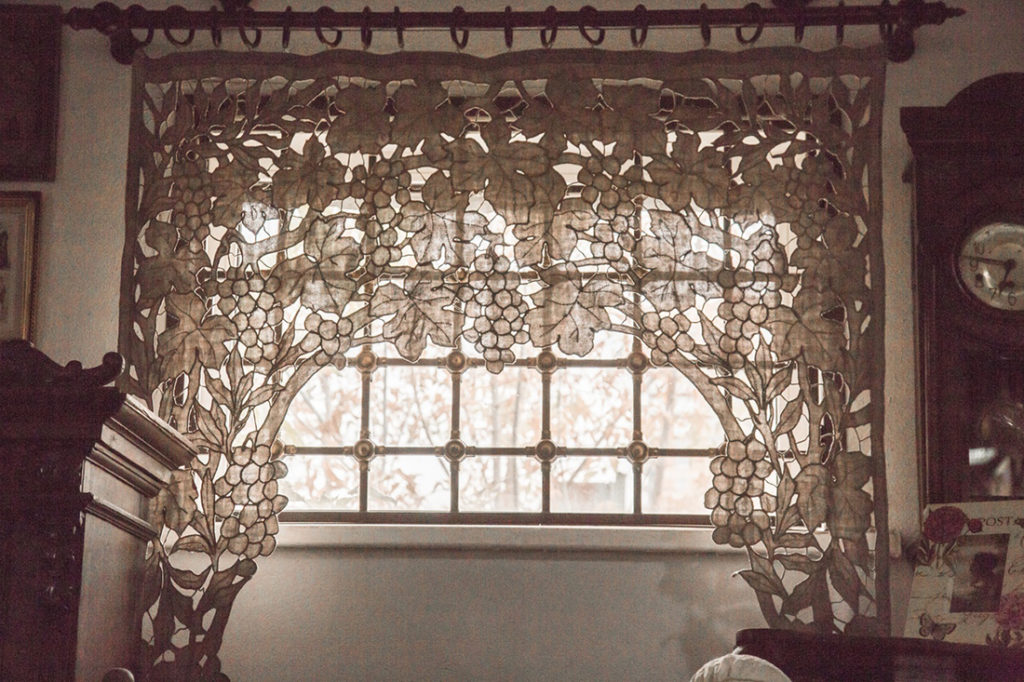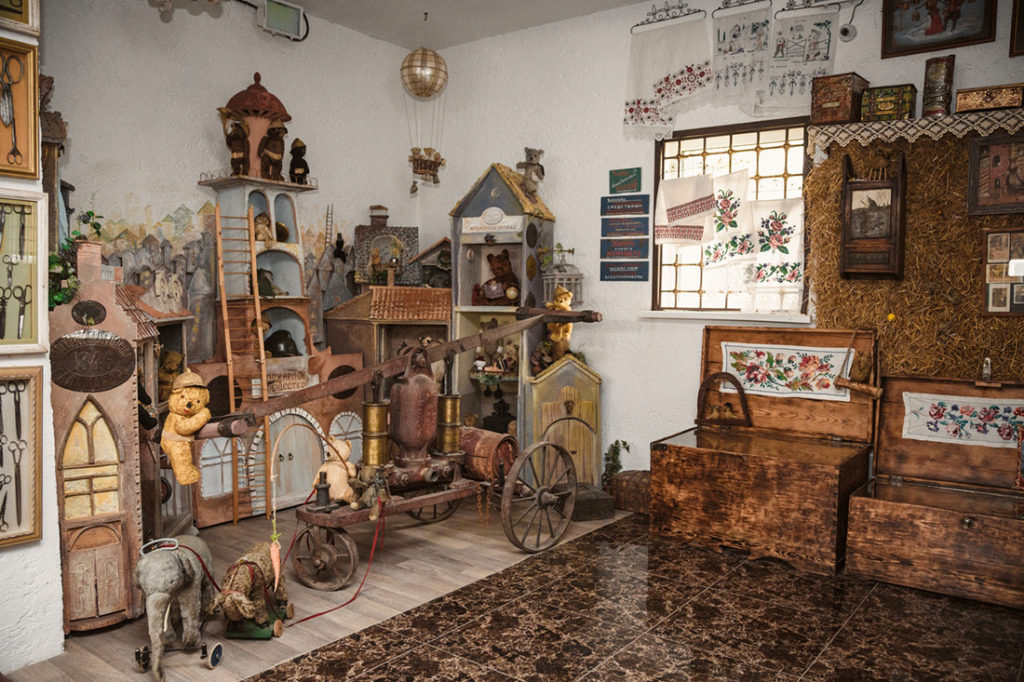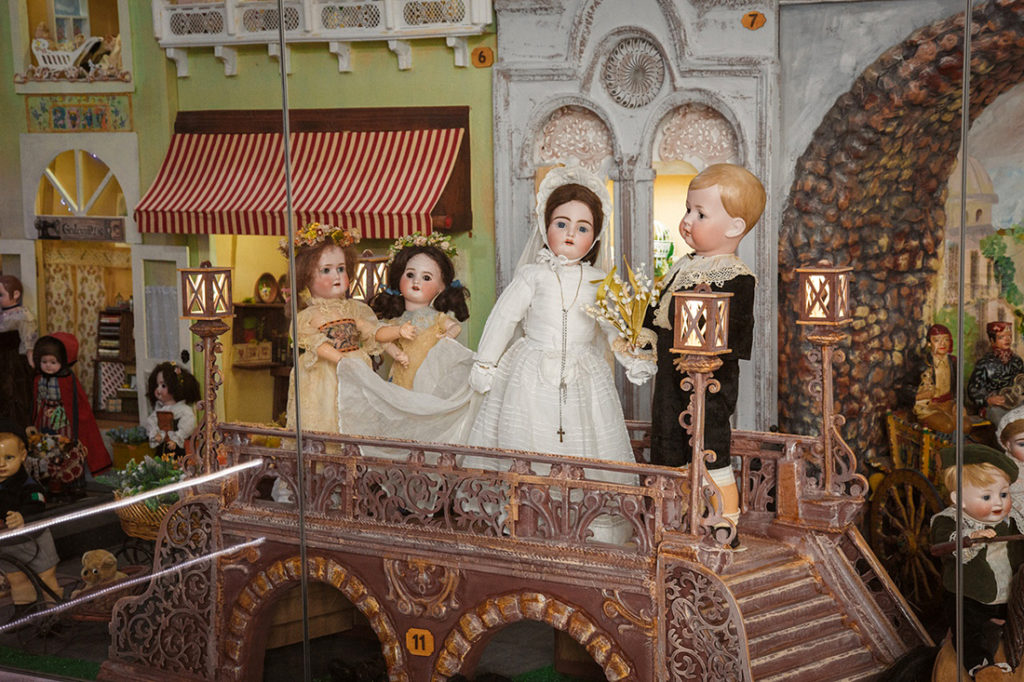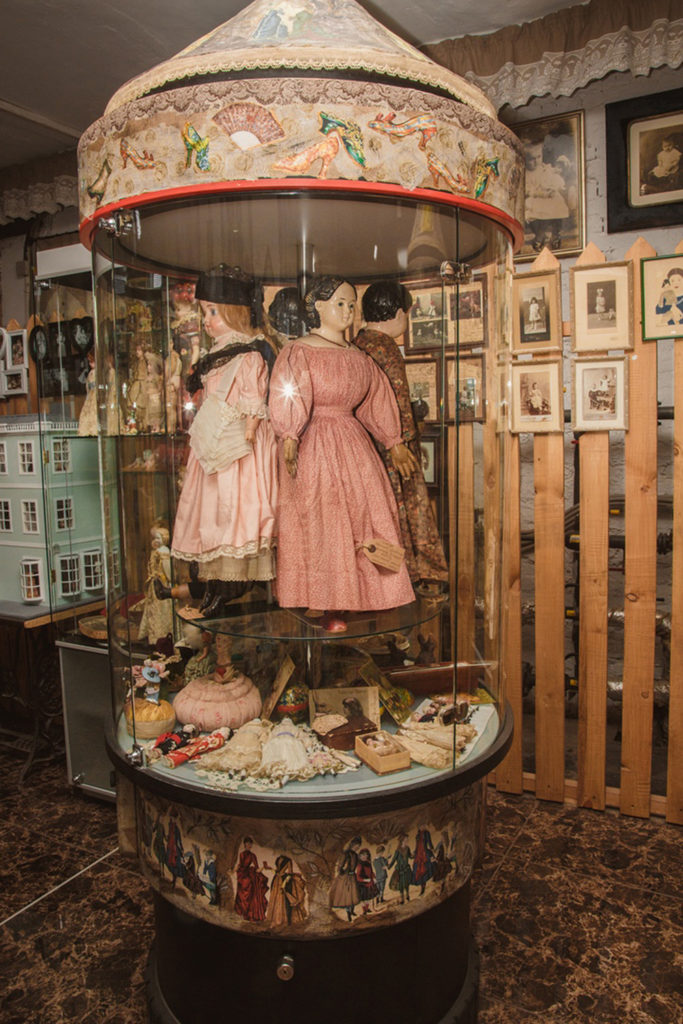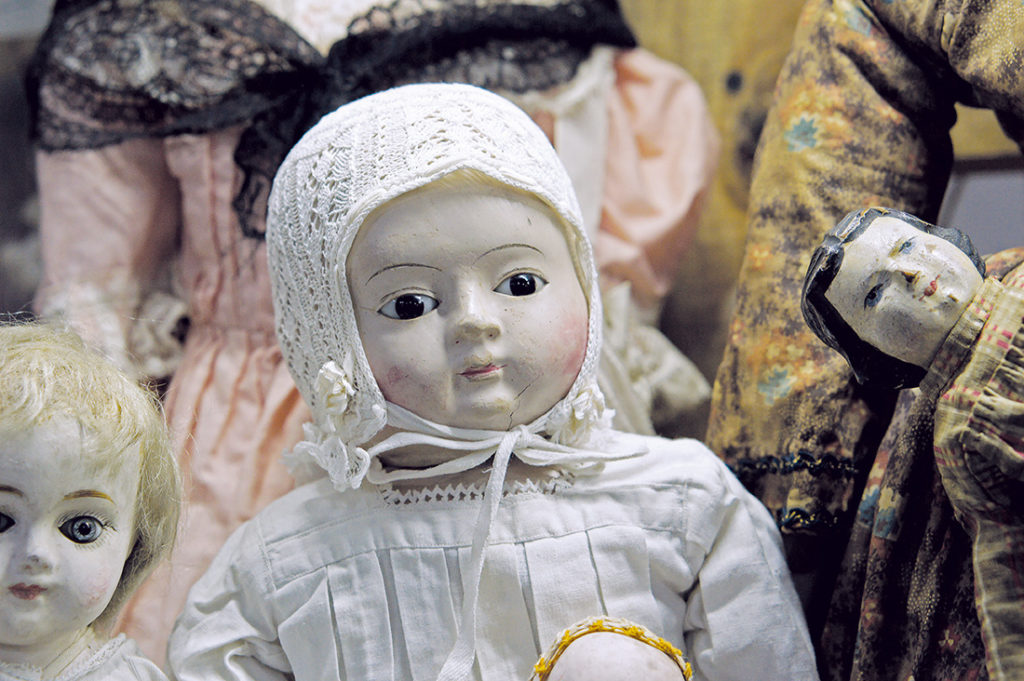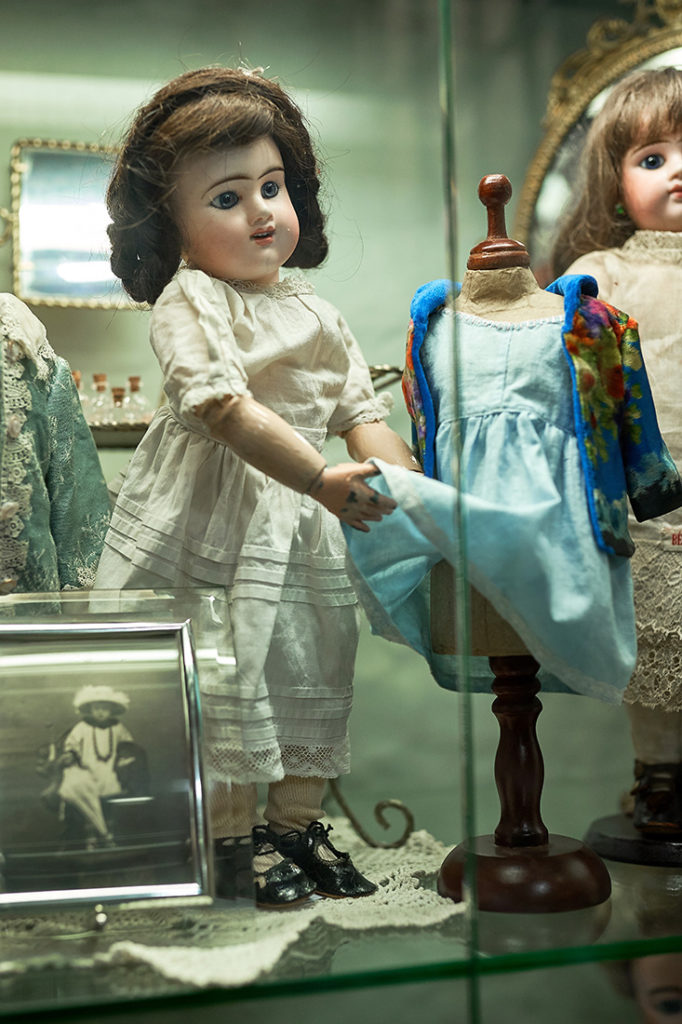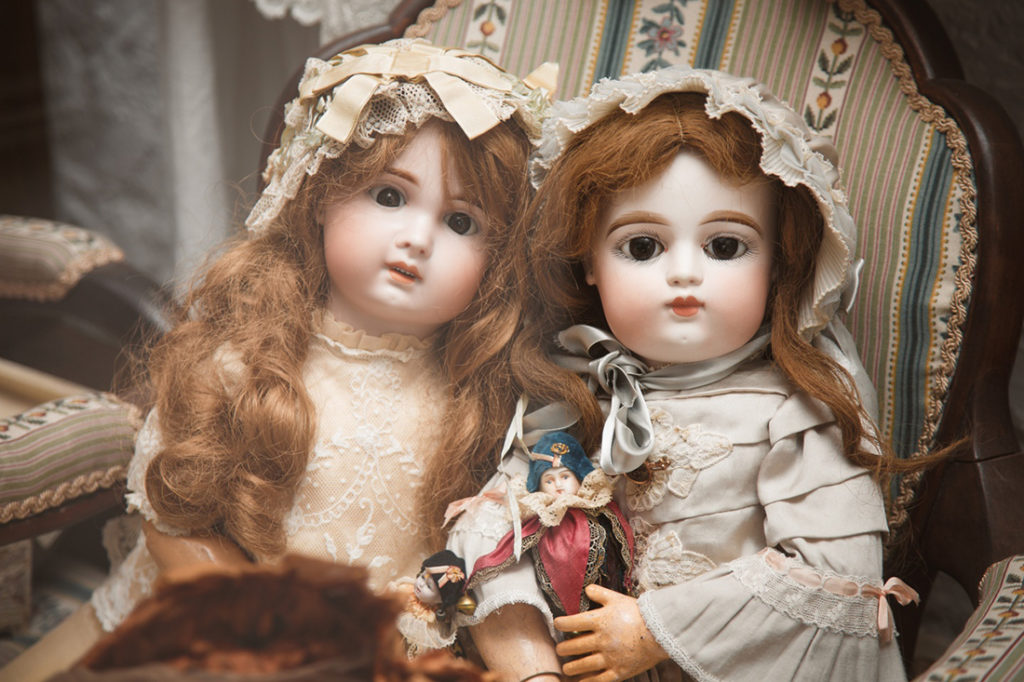The Toys and Needlework Museum
Krasnoyarsk region
Contact information
Krasnoyarsk, Aerovokzalnaya ul., building 15, structure 1
Tel.: +7 (391) 220-07-07
E-mail: sf.nat@yandex.ru
Operating hours
Wed – Sat: 11:00 – 19:00
Sun: 11:00 – 18:00
Ticket price
Full – 110 rubles
Discount – 55 rubles, preschool children(accompanied by adults) people with disabilities, children from orphanages, boarding schools, child orphans, senior citizens, living in the boarding houses for the disabled and elderly – free
Excursions:
Group up to 8 people – 500 rubles / group
Group of 8-18 people – 250 rubles / person
Discount- 200 rubles, Group of preschool children (accompanied by two adults) up to 20 people – 800 rubles / group
The museum founder
Natalya Vladimirovna Safonova
Founded
2017
The noisy intersection at the Krasnoyarsk bus station keeps one quiet and beautiful secret. Here, passing the painted iron gates, you can get into a real fairy tale! Once in the museum, you understand that angels live not only in heaven, but also among us in the form of dolls. On the streets of the magical town, more than four hundred dolls sit, walk, make friends, and play weddings; these dolls were made at famous factories in various countries throughout Europe and America. In the windows you can find young ladies, women, boys, and gentlemen made of porcelain, clay, celluloid, textile, wood, wax, and paper. The oldest of them are already 180 years old, and the youngest we ourselves played with in childhood.
Germany was the cradle of the doll industry, so here you can find many dolls by German manufacturers, such as Armand Marcel, who was born in Russia and was considered the most “prolific” doll master. Kestner, who was called the king of German dolls, produced charming young ladies who also found their home in our museum. Ernst Cammer and Franz Reinhardt, known around the world for their “characteristic” dolls that looked like specific children? Their dolls are also in the collection! These and many other German companies, known and unknown, whose names are lost in time, wars and post-war devastation, are represented by dolls in our collection …
But the most beautiful, of course, were always considered the French fashionistas! Jumeau, Gauitier, Denamur, Steiner: these names sounded like music for girls all over the world in the late 19th and early 20th centuries. In a separate window (after all, the French are so capricious!) they created their “high society”. A separate showcase is also for English women, gentle ladies with pale waxy (literally) skin. There are American dolls: a little Scarlett O’Hara could have played with a doll created in 1858 by the American company Greiner.
In the Russian hall you will get acquainted with the pre-revolutionary dolls of the Russian factories of Dunaev and Schreier-Fingergut, which were almost completely destroyed in the 1920s by the decree of the People’s Commissariat of Education “for excessive bourgeoisness”, and you will see a collection of the first Soviet textile dolls dressed in national costumes. They were made in the thirties of the last century, and most of them were exported to America in exchange for food. Decorated with the toys from the 1960s, the Christmas tree will return to childhood those for whom the main attribute of the New Year was an orange in a long-awaited gift …
A special place in the museum is occupied by the needlework hall. This is the source of the museum collection and a joy for craftsmen of all sorts. Here is a collection of costumes, lace, and lovely ladies’ accessories: hats, fans, handbags, and slippers; everything is in the numerous display windows of the hall. You can endlessly look at the sewing kits, collections of centimeter tapes and needle beds, and unprecedented mysterious gizmos, the purpose of which we do not even know.
